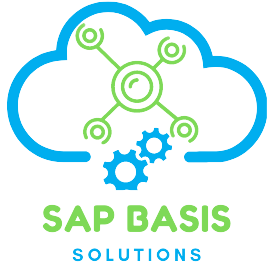How to Avoid the Biggest Mistake in SAP Cloud Migrations: Ignoring Internal SAP BASIS & Security Resources
Quick Summary
- Overlooking internal SAP BASIS & Security resources during cloud migration is a costly mistake.
- Involve your internal SAP BASIS and Security teams early to plan, size, and secure your SAP landscape.
- Don’t rely only on external migration partners; balance them with in-house expertise for compliance and performance.
- Internal teams remain essential for patching, monitoring, cost optimisation, and risk management even after migration.
- View migration as an ongoing journey that requires continuous improvement, regular audits, and internal ownership.
In the UAE and Saudi Arabia, organisations are accelerating digital transformation by migrating SAP systems to the cloud. The promise: agility, scalability, and cost savings. Yet there’s one big mistake many businesses still make: overlooking their own internal SAP BASIS and SAP Security resources, and depending entirely on external SAP BASIS cloud migration partners.In this blog, we’ll explore why your internal SAP teams must stay at the heart of your migration journey, and how to balance their expertise with external support, ensuring your SAP move to the cloud stays secure, compliant, and high-performing.

Understand the real risk before you migrate
Many companies wrongly assume that once systems move to the cloud, everything, including performance, patching, and security, will be fully handled by the cloud provider or migration partner. But moving your SAP environment to the cloud only changes where your systems run, not what they need. Overlooking internal SAP BASIS and SAP Security resources can lead to higher costs, security vulnerabilities, failed audits, and slow system performance. Recognising this risk before starting helps your team build a migration plan that keeps critical internal knowledge and expertise at the centre.
How to Avoid This Mistake
1. Plan your migration with internal SAP BASIS and SAP Security resources in mind
A successful SAP migration to cloud starts with strong planning that includes your internal BASIS and security teams from the very beginning. Engage these internal teams early to assess system sizing, design performance tuning strategies, and create a realistic cutover plan. Simultaneously, review your business’s security requirements, especially those aligned with compliance standards in the UAE and Saudi Arabia. Setting clear performance targets and cost KPIs at this stage ensures your migration stays aligned with business goals. For specialised guidance, see our SAP migration to cloud service page.
2. Don’t treat security as an afterthought
Another common mistake is delaying security improvements until after go-live or leaving them solely to external partners. Instead, collaborate closely with your internal SAP Security team to update authorisation concepts, ensure encryption for data at rest and in transit, and secure internet-facing services. Pre-migration risk assessments led by internal resources help you catch vulnerabilities early. In a region where data compliance and cybersecurity regulations are increasingly strict, this proactive approach isn’t optional, it’s essential.
3. Avoid assuming cloud automation replaces internal SAP BASIS tasks
While cloud providers automate infrastructure management, they don’t replace the need for your internal SAP BASIS team’s expertise. Your systems will still require regular patches, real-time monitoring, database tuning, and careful management of transports and deployments. These tasks ensure stability, security, and cost efficiency, especially in complex hybrid environments common in the Gulf. For deeper insight into the strategic benefits of strong internal BASIS support, read our earlier blog: SAP Cloud Migration: A Journey to Become an Intelligent Enterprise.
4. Perform a detailed cost and performance analysis
One of the most effective ways to avoid expensive mistakes is by involving your internal SAP BASIS and finance teams in a detailed cost and performance analysis, both before and after migration. Without this, businesses risk oversized systems that drive unnecessary costs or under-resourced environments that limit performance. By right-sizing workloads and continuously monitoring usage, your internal teams keep your SAP systems efficient and cost-effective in the cloud.
5. Plan for continuous improvement, not just a one-time move
Cloud migration shouldn’t be viewed as a one-off project delivered by external partners. Many businesses make the mistake of pausing BASIS and security investment after going live. To prevent this, keep your internal SAP BASIS and SAP Security teams actively involved in ongoing monitoring, regular audits, and adapting to changing business and compliance requirements. Their continued oversight ensures your systems stay secure, compliant, and high-performing over time.
6. Work with experienced SAP cloud partners, but don’t replace your internal team
External SAP BASIS cloud migration partners bring valuable tools and regional expertise, but they shouldn’t replace your internal SAP BASIS and security teams. The best approach is to create a partnership: your internal experts protect your unique business knowledge and compliance needs, while external specialists help accelerate migration, guide best practices, and handle complex scenarios. This collaboration helps manage costs, reduce risk, and ensures a smoother journey to the cloud.
Conclusion:
The biggest mistake in SAP Cloud Migrations isn’t just technical, it’s overlooking your internal SAP BASIS and SAP Security resources and relying solely on external partners. In reality, your SAP systems still need proactive internal management, strong security, and continuous tuning to deliver the promised benefits of the cloud. By making your internal teams central to planning, migration, and ongoing optimisation, you protect your data, control costs, and unlock real business value from your SAP cloud journey.
Ready to secure your SAP migration to cloud? Connect with us to build a strong, secure, and compliant SAP environment that combines your internal strengths with expert external support, ensuring sustainable growth in the UAE, Saudi Arabia, and beyond. Contact us today.
Frequently Asked Question:
1. Why is it risky to ignore internal SAP BASIS and Security resources during cloud migration?
Ignoring them may lead to higher costs, compliance gaps, security vulnerabilities, and system performance issues.
2. What role does an internal SAP BASIS team play after migrating to the cloud?
They handle patching, monitoring, database tuning, and manage transports to keep systems stable, secure, and optimised.
3. Can external SAP BASIS cloud migration partners replace internal teams?
No. External partners can support and speed up projects, but internal teams are critical for ongoing compliance and business-specific needs.
4. How can businesses balance external SAP migration partners with internal expertise?
By using partners for technical execution and tools, while internal teams ensure governance, compliance, and performance oversight.
5. Why shouldn’t security improvements wait until after migration?
Early involvement of internal security teams helps identify and fix vulnerabilities before they become bigger problems.
6. Is SAP migration to the cloud a one-time project?
No. It’s an ongoing process requiring continuous improvement, monitoring, and adapting to changing business and regulatory needs.
7. What steps help reduce SAP cloud migration costs?
Detailed cost and performance analysis, right-sizing workloads, and involving internal SAP BASIS teams for optimisation.
